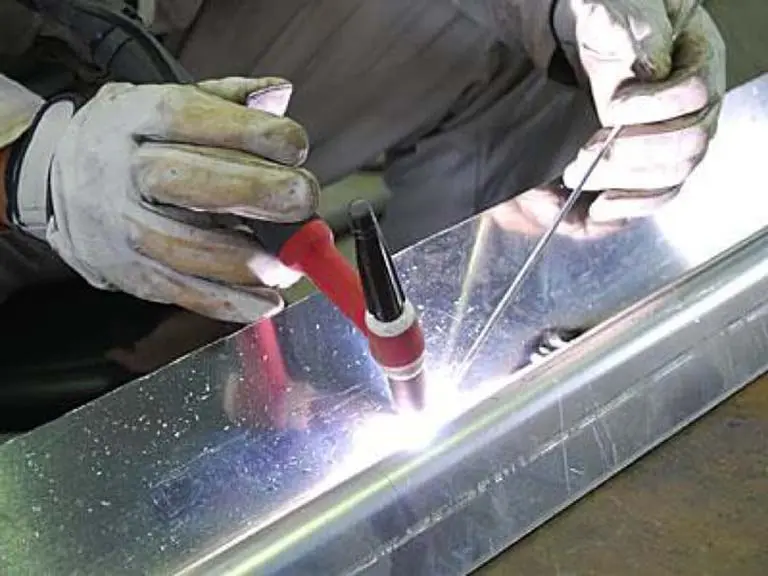tig welding welding machine and process introduction

ALAND WELDING Let you feel the most sincere welding service
TIG welding, the full name of Tungsten Inert Gas Welding (tungsten inert gas welding), also known as argon arc welding or argon arc gas shielded welding, is a common arc welding method. In TIG welding, the welding area is protected under an inert gas (usually argon) to prevent the adverse effects of oxygen and other atmospheric components on the molten pool and arc. This welding method typically uses a non-consumable tungsten electrode that heats and melts the surface of the workpiece through an electric arc while providing an inert gas to protect the welding area. Because of the use of inert gases, TIG welding generally produces clean, uniform welds with good appearance and weld quality.

1. Development orientation of Tig welders
(1) Professional training and certification:
Find an accredited welding training institution and complete relevant TIG welding training courses. Ensure training courses cover basic knowledge, practical skills and safety training.
Consider obtaining welding-related certifications, such as AWS (American Welding Society) certification or other internationally recognized welding certifications. These certifications enhance your professional credibility and demonstrate your skill level to employers.
(2)Continuous learning:
Subscribe to industry-related magazines, periodicals and websites to stay up to date on the latest welding technologies, materials and equipment. Attend industry conferences, seminars and training courses to exchange experiences and knowledge with other professionals.
Consider furthering your education, such as pursuing a welding-related degree or certificate program, to advance your professional knowledge and skill levels.
(3) Accumulate experience:
Gain extensive experience in different types of projects and work environments. Worked on projects of all sizes and types involving different materials, thicknesses and construction types.
If possible, try to work in multiple industries and applications, such as aerospace, automotive, manufacturing, etc., to broaden your scope of experience.
(4) Develop professional skills:
Gain an in-depth understanding of the operating principles and maintenance methods of welding equipment, and learn to quickly identify and resolve common equipment failures. This will make you a key player on the team and increase your market value.
Learn quality management and quality control methods related to welding to ensure your work meets industry standards and customer requirements.
(5) Seeking promotion opportunities:
Actively seek opportunities for advancement, such as becoming a foreman or team leader. Demonstrate your leadership and management skills and actively participate in project management and teamwork.
If there are no opportunities for advancement within the company, consider looking for a more challenging position with more opportunities for growth at another company or organization.
(6) Establish a good professional reputation:
Work hard and maintain high quality work performance at all times. Maintain good communication and cooperation with colleagues, customers and superiors, and establish good working relationships.
Expand your network by participating in industry-related networking events and professional organizations. Building a strong professional reputation can lead to more job opportunities and career paths.
2. Knowledge that high-paid welders need to master
(1)Welding technology:
Accurately control welding current, voltage and welding speed to ensure welding quality and stability.
Proficient in operating welding equipment and tools, including TIG welding machines, welding guns, gas supply systems, etc.
Able to perform complex welding tasks, such as welding thin materials, welding different types of metals, etc.
(2)Material knowledge:
Be familiar with the characteristics and performance of welding materials, including the melting point, thermal conductivity, expansion coefficient, etc. of different metals.
Learn about welding methods and best practices for different materials to ensure welding quality and reliability.
(3) Equipment maintenance and troubleshooting:
Have the skills to maintain and maintain welding equipment, including cleaning, calibration, replacement of parts, etc.
Able to quickly identify and resolve common welding equipment failures, reduce downtime and increase production efficiency.
(4)Quality control and testing:
Be familiar with welding quality control standards and procedures to ensure welding quality meets industry standards and customer requirements.
Able to detect and evaluate welding defects, such as cracks, holes, pores, etc., and take corresponding repair measures.
(5)Safety awareness:
Follow welding safety regulations and operating specifications to protect yourself and those around you.
Have the ability to handle and respond to emergencies, such as fires, gas leaks, etc.
(6)Teamwork and communication skills:
Ability to communicate and work effectively with team members, supervisors and customers to solve problems and complete tasks.
Have good team spirit and leadership skills and play an active role in the team.
(7)Continuous learning and development:
Continue to learn the latest technologies and development trends in the industry, and continuously improve your skills and knowledge.
Attend training courses, seminars and professional conferences to gain new skills and certifications to stay competitive.
Overall, TIG welding is a high-quality, versatile welding method suitable for applications requiring high-quality, precision welding, such as aerospace, automotive manufacturing, food processing, and other fields. Its advantages include high welding quality, good weld appearance, and suitability for a variety of materials. By mastering TIG welding technology, strengthening the learning of relevant knowledge and skills, and continuously improving one’s professional level, people engaged in TIG welding can be provided with broader career development prospects and more generous salaries.
Articles you may be interested in:
Introduction To Welding Pad Process
How To Choose A Suitable Wire Feeder
Stick Welding Concept And Process
WSME Welding Machine Introduction
Introduction To TIG Welding Machine
Learn More About Resistance Welding
How To Choose Industrial Water Chiller
Arc Welding Machine Applicable Industry
Difference Between MIG And TIG Welding
Choice Of Different Types Of Welding Rods
The Importance Of Welding Torch Selection
Introduction To Common Welding Techniques
MMA Welding Machine Introduction And Process

